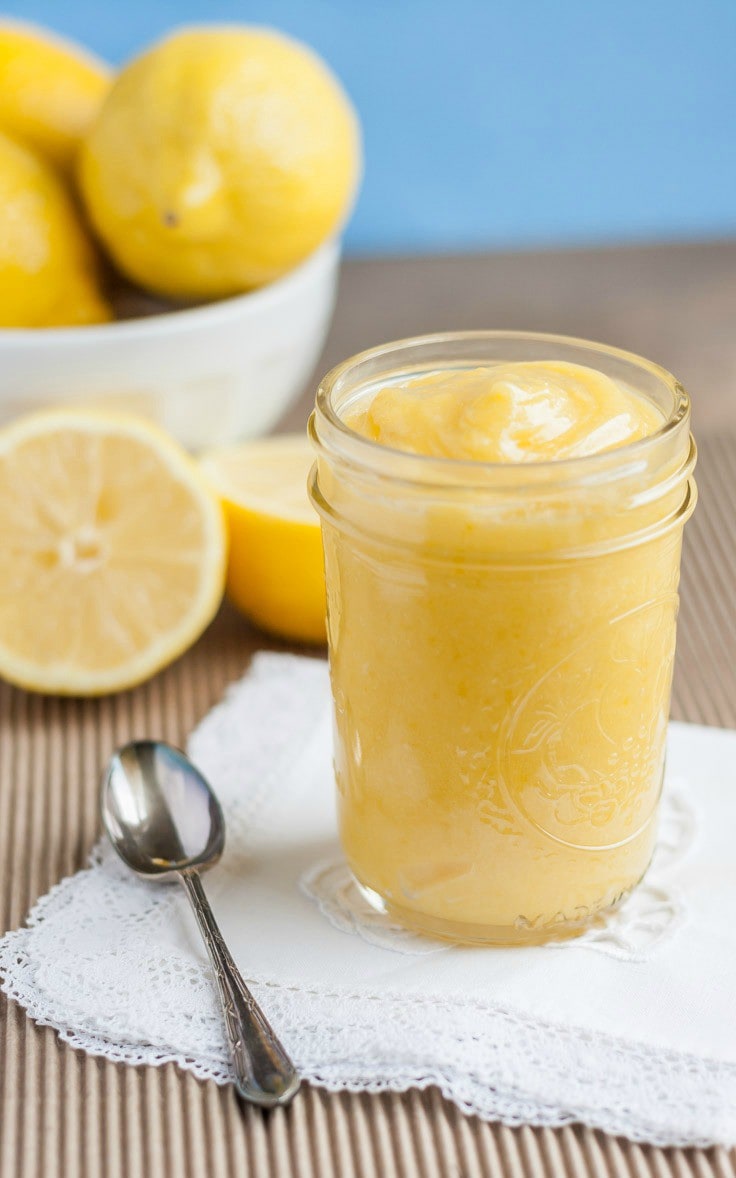

Pour the cream into a chilled mixing bowl and whisk until soft and thick. You will also need a cake tin or plastic freezer box approximately 24cm x 12cm x 7cm deep, lined loosely with kitchen film or waxed paper. Failing that, store-bought meringues will do, but the texture of the finished ice will be slightly less interesting. The ideal here is homemade meringues with a crisp outside and a chewy centre. It will keep for a couple of weeks in the refrigerator. Pour into spotlessly clean jars and seal. Remove from the heat and stir occasionally as it cools. Let the curd cook, stirring regularly, for about 10 minutes, until it is thick and custard-like. Mix the eggs and egg yolk lightly with a fork, then stir into the lemon mixture. Stir with a whisk from time to time until the butter has melted. Put the lemon zest and juice, the sugar and the butter, cut into cubes, into a heatproof bowl set over a pan of simmering water, making sure that the bottom of the basin doesn't touch the water. I find that stirring lightly with a whisk introduces just a little more lightness into the curd, making it slightly less solid and more wobbly. Most lemon curd recipes instruct you to stir the mixture with a wooden spoon. You can also win brownie points for serving it at Sunday breakfast – spoon the curd over tiny blinis straight from the pan and top with a curl of crème fraîche. This silky spread is just what you need for filling meringues and for stirring into thick, Greek-style yogurt and crushed Amaretti biscuits as an instant dessert.Ī couple of quickies I should also mention: you can produce an instant syllabub by stirring an equal quantity into whipped cream and serving it with crisp almond biscuits. A jar of the canary-coloured spread in the fridge is a must for stuffing pancakes, filling éclairs, spreading on toasted teacakes and cheering up a baguette or floury white loaf. It seems we have always had a taste for it, but then we have every reason to. Failing that, a good firm rolling on the table with the palm of your hand will do the trick.įlip through old cookery books, particularly those from the Victorian era, and you will find many a recipe for this deeply citrus butter. I leave mine in the warmth of the kitchen, or put them in the bottom of the Aga for 10 minutes before I squeeze them.

The warmer the fruit, the more juice they will give. If you can wait, leave them till they are soft enough to dent with your thumb. The leaves are the ultimate clue as to how long your fruit has been off the tree, but supermarkets remove them as a matter of course. Given the option, I tend not to buy those without a leaf or two attached. Unwaxed or organic lemons are sold at a premium because they have a shorter shelf life, but they don't add wax to your lemon mousse, soufflé or curd. It is there to keep the lemons on the shop shelves for longer in good condition. It is greasy to the touch and turns sticky when you rinse the fruit under the tap. The lemon problem: do you rinse or scrub, wipe or just rub them on your apron? Most lemons are now sold with an edible wax coating. The zest should be so fine as to be indefinable in the finished preserve – this isn't marmalade. Anything below the first fine layer of zest will be bitter rather than pleasantly sour and take your curd well beyond lip-puckering. You will need a good sharp grater, one that allows you to use just enough pressure to remove only the lemons' outermost zest. The surprise for me is that, rather than the temperamental preserve I had been warned about, making lemon curd couldn't be more straightforward. Good though some of the commercial stuff is, and especially when made by artisan producers, it can never match the batch you make at home. Lemon curd, that gloriously sweet-sharp preserve – a little jar of sunshine – is so much better when made at home. Slightly steamy, warm and bitingly fresh – this was the perfect kitchen atmosphere for a winter's day. One or two would have been pleasing enough, but when the whole kitchen is filled with the scent of grated citrus the effect is startling. On a particularly icy day last week, my kitchen came alive with the stinging hit of freshly grated lemons for a batch of lemon curd. That pervasive, almost Christmas-time scent that accompanies a day spent marmalade making the tray of freshly baked oatcakes that sends the smell of frugal bonhomie wafting through the house the almost hallucinogenic fragrance of grinding a large quantity of cardamom for Danish pastries or a curry. T he kitchen is chock-full of sensory pleasures.


 0 kommentar(er)
0 kommentar(er)
